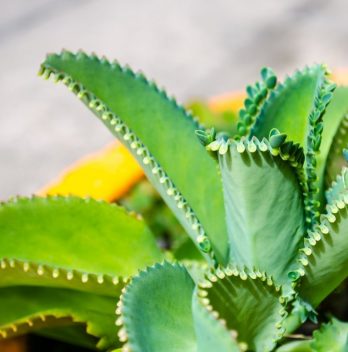Mother of Thousands plant is a remarkable plant with some interesting physical features. They are characterized by their tiny plantlets that form on the edges of their leaves. It is a type of succulent that grows from a single stem.
Mother of thousand plants is also known as Alligator Plant and Mexican Hat Plant. They are ideal as houseplants.
We will enlighten you on everything you need to know about the Mother of Thousands plants so let’s explore some things about them.
Some Info About Mother of Thousands Plant
Mother of Thousands plants origin is from Madagascar. They are from the family Crassulaceae and they are closely associated with the Jade plant and Flaming Katy. Take note not to confuse the mother of thousands with the mother of millions (chandelier plant). This is because they are quite similar and they share similar characters.
One distinctive nature of the mother of thousands is the little plantlets that form along the edges of the plant. These tiny plantlets are capable of taking root by growing on any appropriate
For some, mothers of thousands may be problematic and tedious especially when grown outdoors because they can be pretty invasive. Their little plantlet can drop on any appropriate
Even with the drawback of the tiny plantlets taking over any
How to Handle Mother of Thousands Plant
Light
They do so well with light but not too much direct sunlight because of their fragile leaves. Around the time of fall to early spring (cooler months), the sun is not so hot or harsh.
They can be placed in direct sun during this time so they can get adequate light. You can also give them early morning direct sunlight (in summer) when the sun is not so hot.
Soil to use
The best kind of
Hoffman 15503 Canadian Sphagnum Peat Moss, 10 Quarts

Check out How to Make the Best Premade Super
Manner of Watering
Mother of plants should be watered when the
You should also prevent the leaves from getting wet when watering. This is because their leaves are susceptible to rot when wet.
Potting
The terracotta pot which is ideal for most cacti plants is a good choice for the mother of thousand plants. The root of the mother of thousand plants is fragile and will need the circulation of air to help the
The pot should be placed in a tray to help drain excess water. As soon as excess water is drained, empty the excess water. Do not allow the excess water to stay for too long. If the excess water lingers, it can cause root rot because the mother of thousand plants doesn’t do well in a soggy environment.
Pruning
Pruning might be necessary for your mother of thousand plants. When you notice your plan start to grow curlier outwards, you can pinch off the upper part of the plant. This will lead to the leaves of your plant growing downwards towards the stem. You can also prune or pinch off any dead or damaged leaves.

Is the Mother of Thousands Plant Toxic?
The straight-up answer is yes! Mother of thousand plants is toxic. All the parts of the plant are toxic including the tiny plantlets. Therefore, be sure to position them out of reach of children, pets, and livestock.
Conclusion
Mother of thousand plants can be a good addition to your houseplant or garden plant. It’s an easy plant to grow and as it does not require difficult care.
With that said, we do hope you have learned one or two things about the mother of thousands plants.

Eunice is an enthusiastic gardener with a passion for growing beautiful flowers. She loves nothing more than spending time in her garden, tending to her plants and enjoying the outdoors. Eunice has been gardening for over 15 years and has developed a unique style of landscaping that is both practical and aesthetically pleasing. She is especially fond of growing roses and enjoys experimenting with different varieties and colors. Eunice takes great pride in her garden and often shares the fruits of her labor with friends and family. In her spare time, she enjoys reading gardening magazines and attending local horticulture events. Eunice is passionate about her hobby and is always eager to share her knowledge and experience with others.




